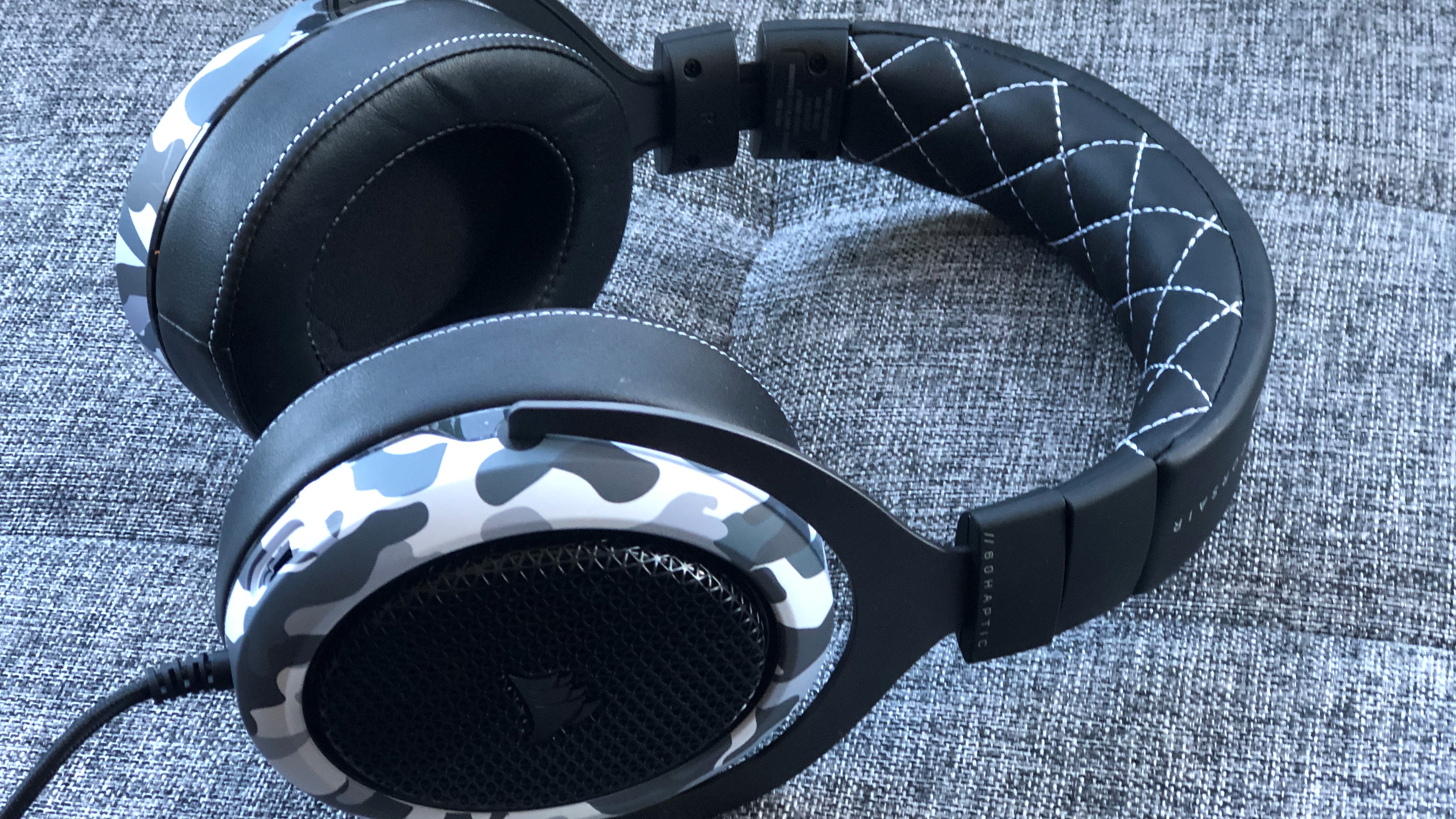Our Verdict
The Corsair HS60 Haptic features excellent haptic bass technology that offers a new level of immersion, but won't be everyone's cup of tea.
For
- A bass-lover's headset
- Great Build Quality
- Clear Microphone
Against
- Very Expensive
- Gaming haptics not nearly as impressive
- Ugh, Arctic Camo
PC Gamer's got your back
Corsair's HS60 Haptic is a bass-lover's set of cans if ever a gaming headset could take that dubious accolade. But it's one we're not sure is really going to work for everyone.
The relationship between PC gaming and haptic feedback has always been a strange affair. Yes, we've gotten used to controllers that vibrate. That's not enough! In efforts to find new ways to immerse yourself in your favorite games via vibrations, PC gaming's mad scientists have found new ways to stuff motors into things whether we like or not. Over the years we've seen vibrating keyboards and mice, haptics vests, and even chairs with the natural course of evolution making its way to gaming headsets.
The Corsair HS60 Haptic isn't the first haptic feedback gaming headset, with the Razer Nari Ultimate being the gold standard for such things. The sensation of using haptic feedback headsets can be best described as attaching two small subwoofers to the side of your head. If you found that idea to be metal as all hell, haptic headsets are for you.
So, let's talk about the large rumbling elephant in the room. The HS60 Haptic uses Taction haptic bass technology. The idea is the headset takes all the bass and low-end frequencies and translates them into vibrations you can feel In the headset.
That's the biggest distinction between this and other haptic feedback headsets as well, as this technique focuses purely on the bass. This means every gun-shot, explosion, and large truck that passes by in Watch Dogs: Legion can actually be felt as opposed to just anything remotely louder than a conversation. That's something other haptic headsets struggle with and is something which can be incredibly overwhelming for some folks.
For game immersion, it's pretty cool, although it can often feel a bit much when you're in an intense firefight. I often found myself dialing down the haptics most times just because I couldn't focus. I played a few matches of Call of Duty: Black Ops – Cold War with haptics on along with surround, and it was surreal. Matches felt super tense with every terrifying gunshot and artillery strike feeling more impactful and, quite frankly, much more stressful.
While the tech works well, it really comes down to a matter of preference. Some people will be into it while others refuse to engage with haptic headsets on a cellular level.
Corsair makes a claim of a 20% improvement in reaction time, but there's no real way for me to test that claim. Honestly, the constant vibration on my skull definitely put me in an uneasy state of alertness. Better reaction time? That's debatable.
If you're a competitive gamer, you need as little distraction as possible, so I really can't see pro-gamers leaving haptics turned on in a high stakes match in Valorant.
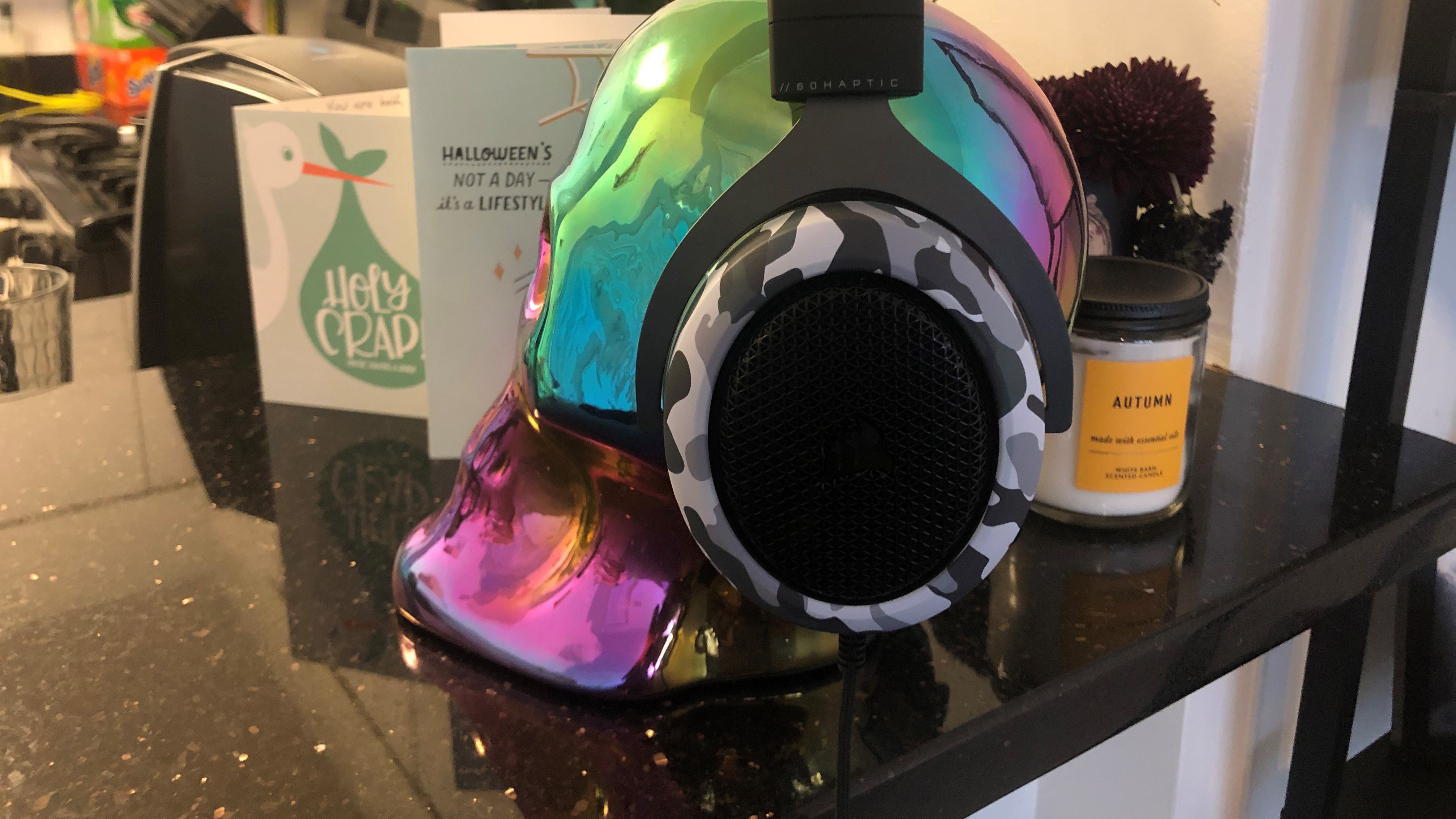
Driver-type: 50mm
Frequency response: 20–20KHz
Microphone frequency response: 100–10KHz
Design style: Over-ear
Microphone: Detachable Unidirectional noise-canceling
Connectivity: USB
Weight: 675g
Price: $130
A common complaint I have about a lot of gaming headsets is the bass. Most gaming headsets offer a weak bass or an overexaggerated bass to the point it sounds muddy. The haptics is a clever way to give the bass a boost especially when listening to music. Music with heavy bass is where I found the Haptics doing the most work, in songs like WAP by Cardi B ft. Megan Thee Stallion or when I deep dived into my 'I Love My 90s Hip Hop' playlist on Spotify.
With the haptics turned off, you're essentially working with an HS 60 Pro Surround headset which you can currently pick up on sale for $50, or the wireless HS50 SE for $70. Don't get me wrong, both are great headsets at the perfect price. So, unless you're really into haptics, $130 is a big-time price hike for a wired HS 60 headset.
As much as I like the headset, the Arctic Camo design is... a choice. I think a simple black and white would have made the HS60 look as appealing as it sounds. I actually think it makes it look like a budget headset which is not worth $130.
Ugly camo aside, the headset sat comfortably on my head thanks to the memory foam ear cups. They're also adjustable so if you wear glasses, you can relieve some of the pressure against your frames, which is a nice touch. The HS60/70 has always been a comfortable and durable line of gaming headsets.
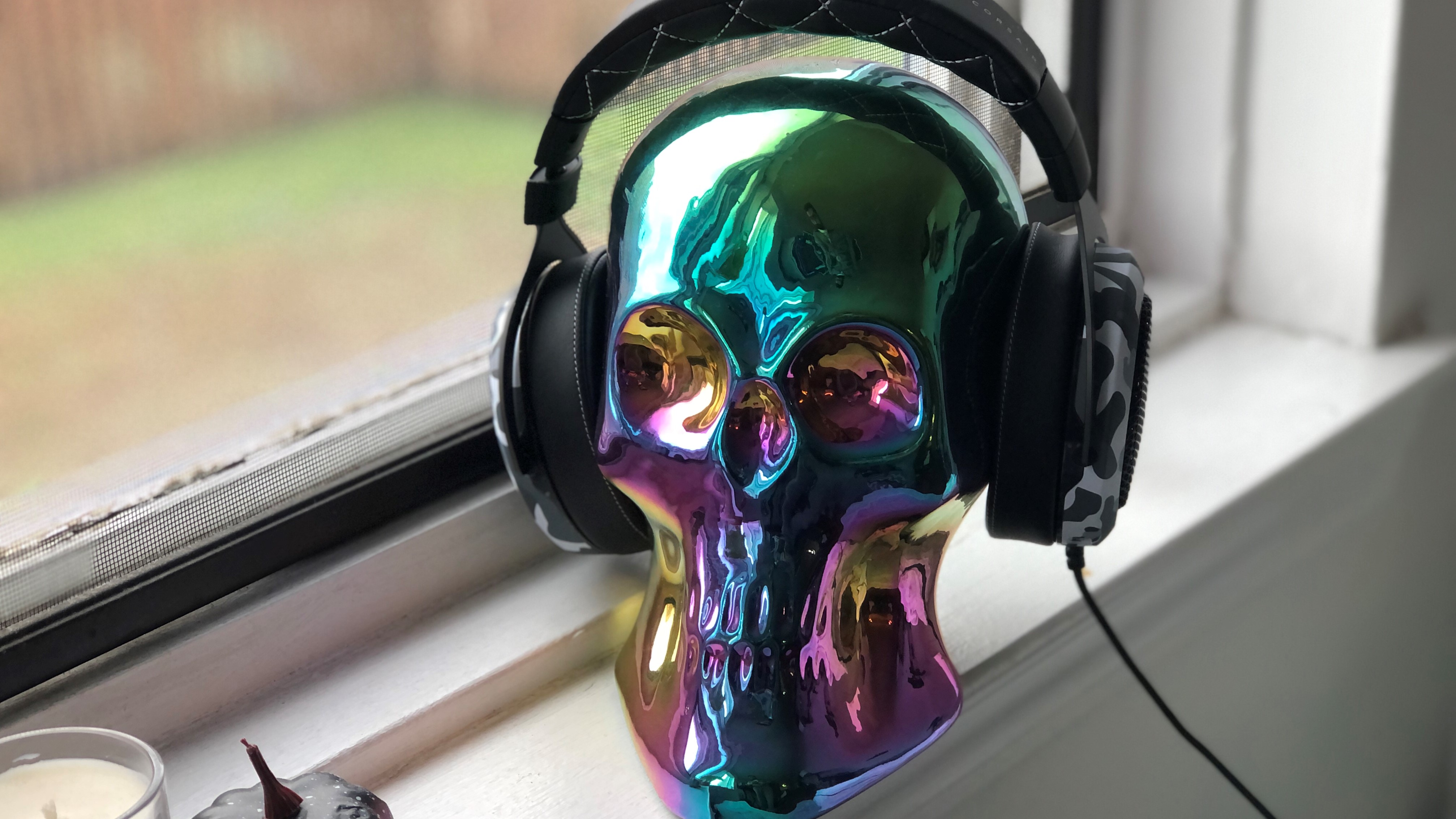
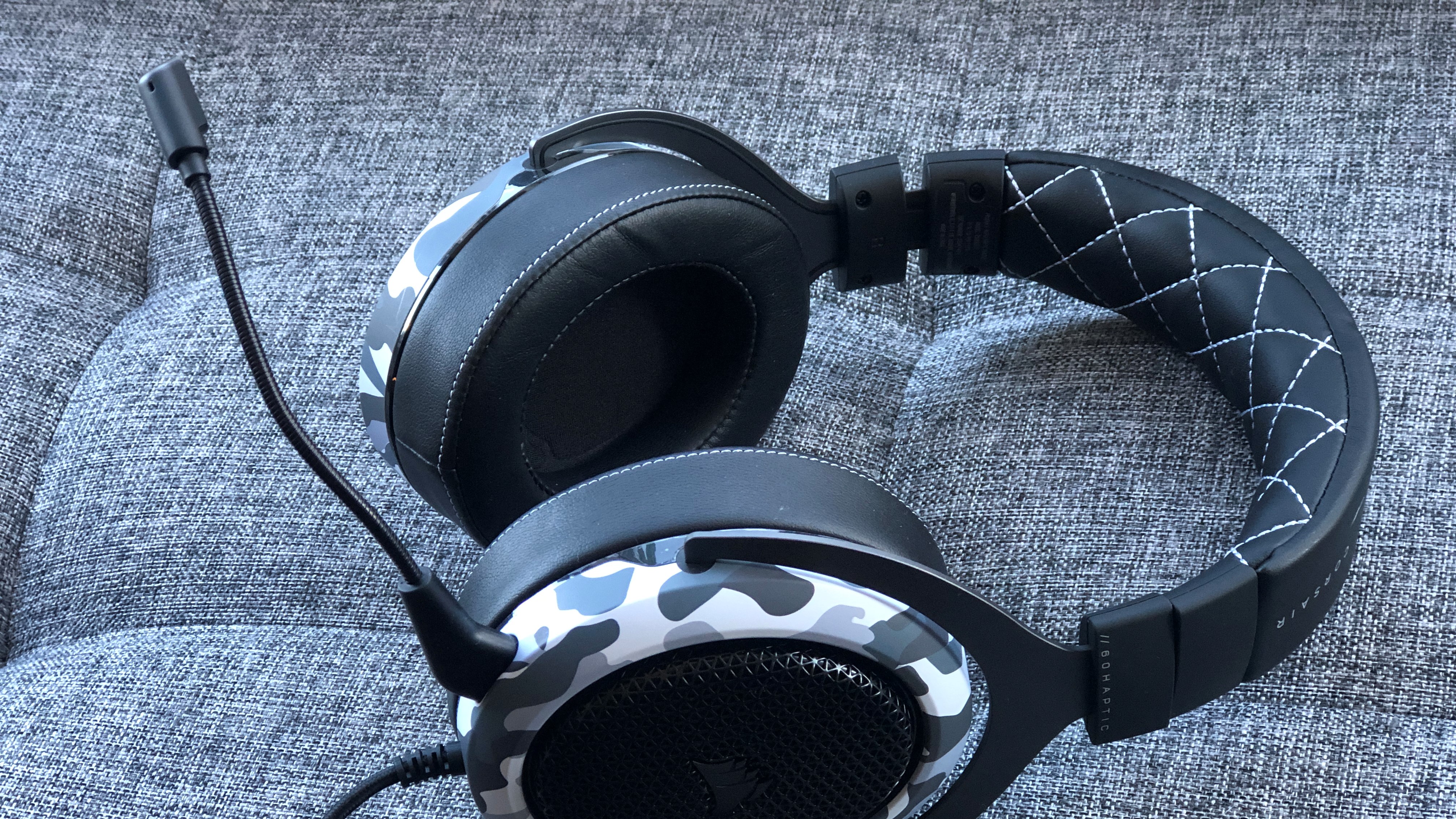
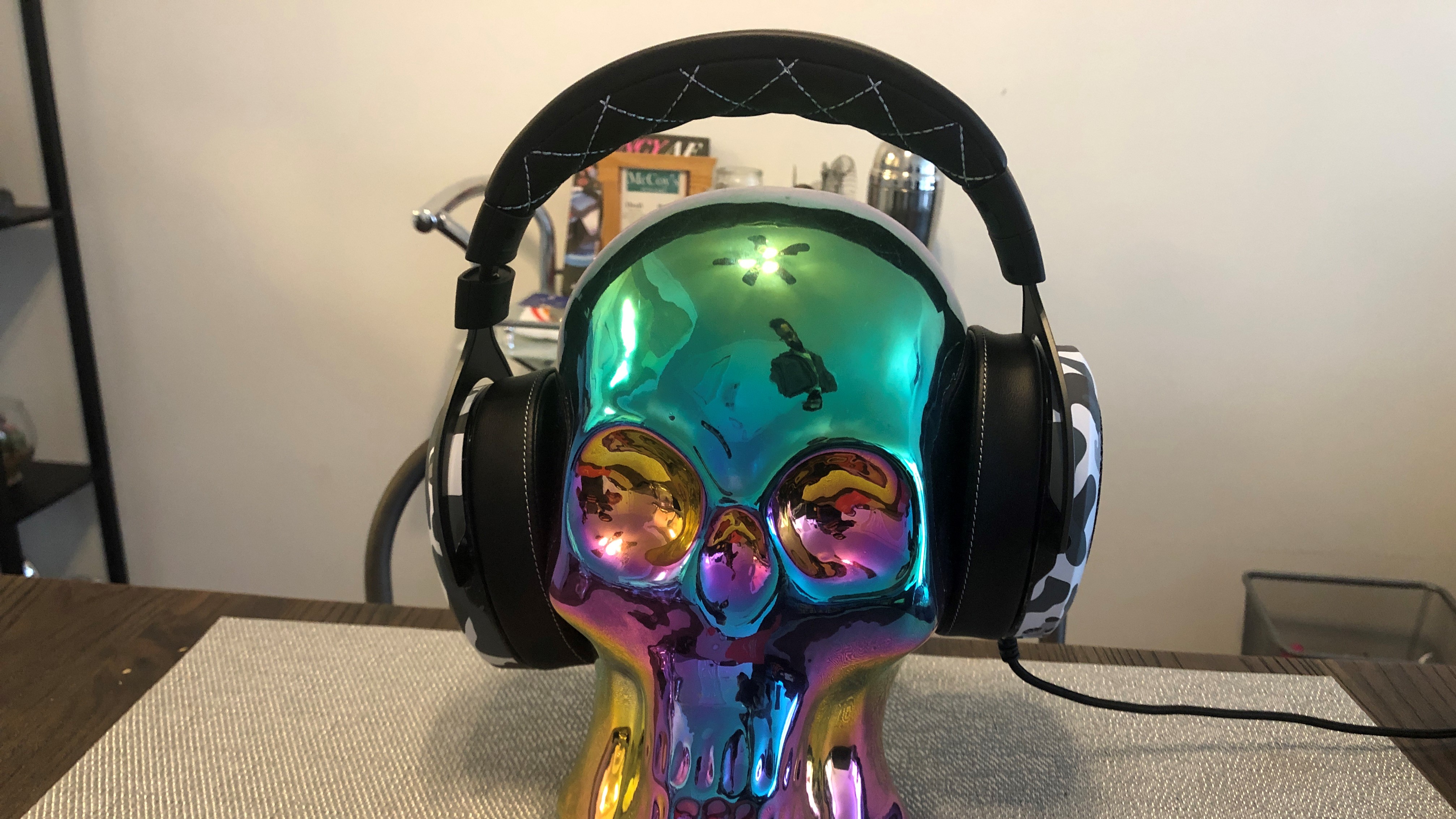
Another positive shoutout for the HS60s is the detachable, unidirectional, noise-canceling microphone. In fact, it has a better microphone than you'd find on most premium gaming headsets. You can hear how well my voice sounds, making it great for video calls and, of course, game chat.
Your mileage with the haptics will absolutely vary. So, unless you're all in, the Corsair HS60 Haptic will just be a fun novelty for anyone looking to find a new way to immerse themselves in their most bombastic games. Even so, $130 is simply too much money for a fun novelty (that isn't for everyone), more so for a wired gaming headset that is available at nearly half the price without the haptics.
The Corsair HS60 Haptic features excellent haptic bass technology that offers a new level of immersion, but won't be everyone's cup of tea.

Jorge is a hardware writer from the enchanted lands of New Jersey. When he's not filling the office with the smell of Pop-Tarts, he's reviewing all sorts of gaming hardware, from laptops with the latest mobile GPUs to gaming chairs with built-in back massagers. He's been covering games and tech for over ten years and has written for Dualshockers, WCCFtech, Tom's Guide, and a bunch of other places on the world wide web.
